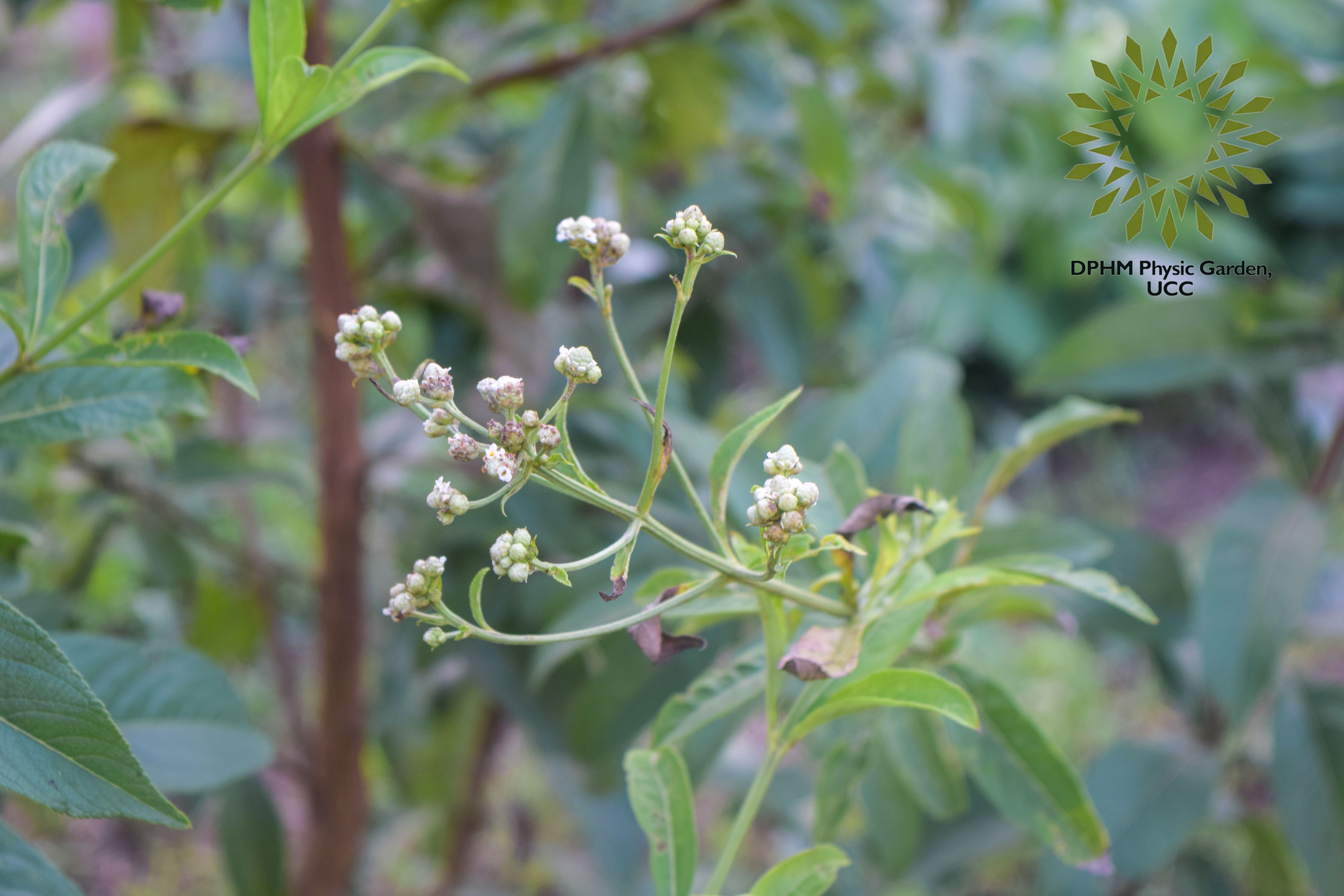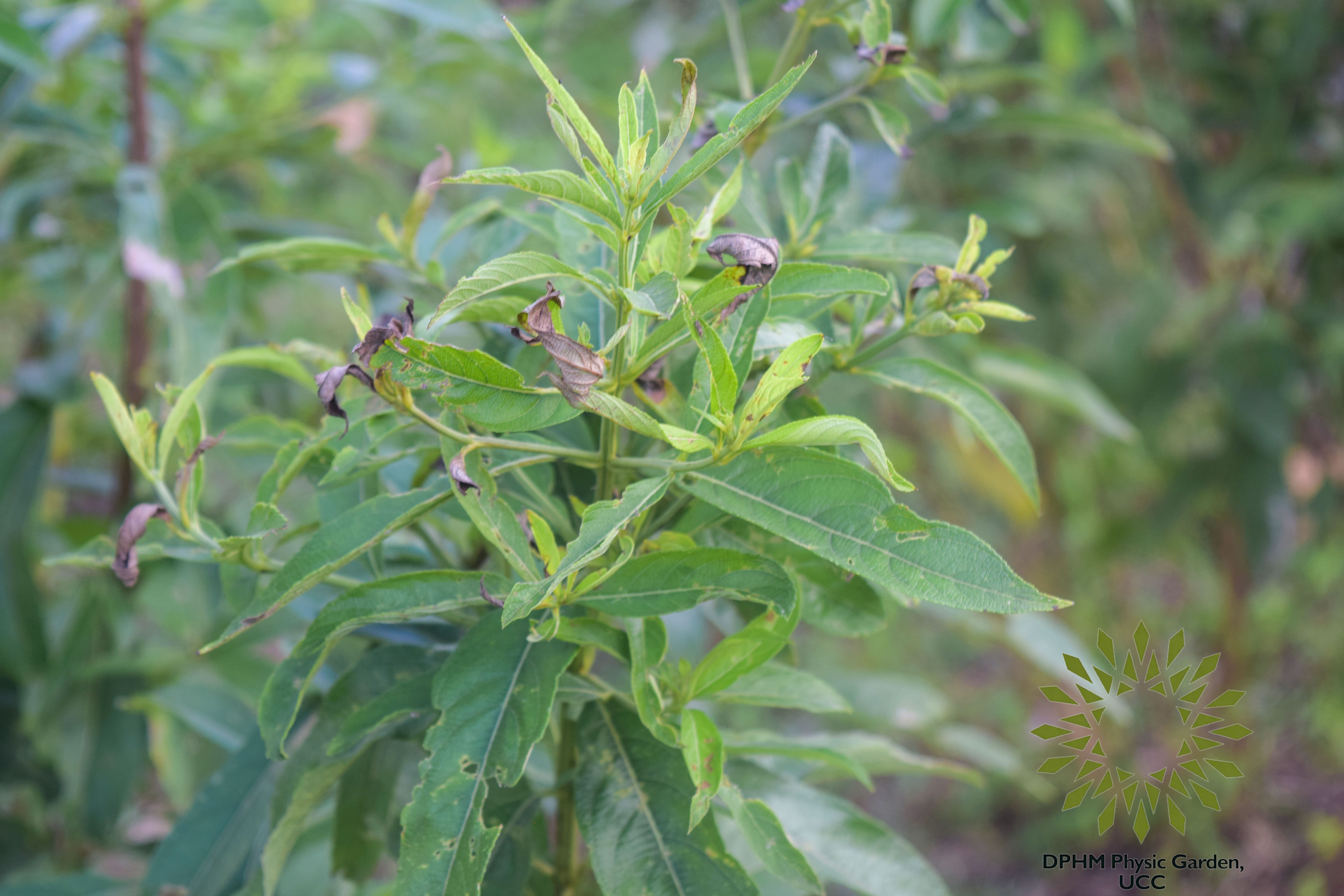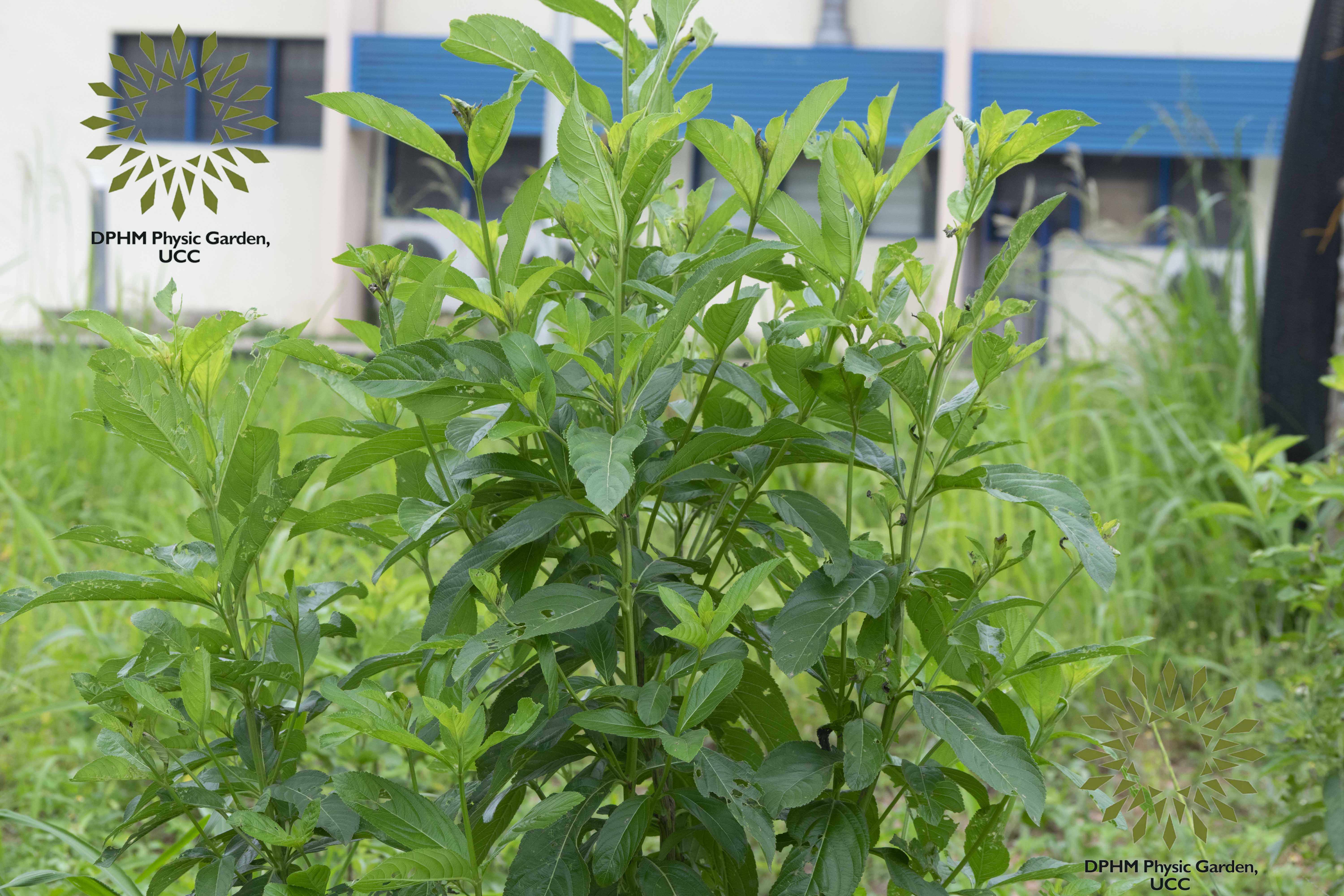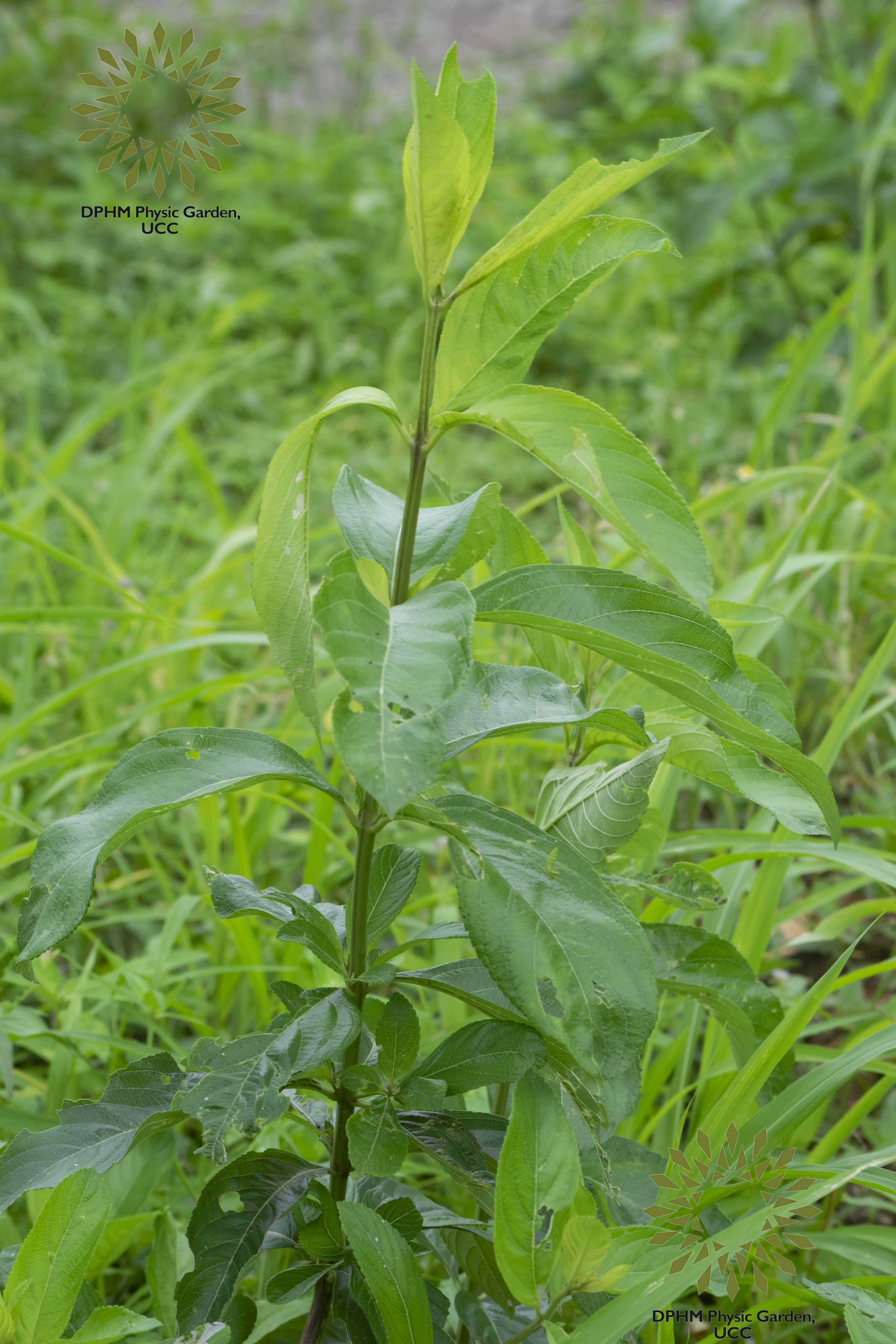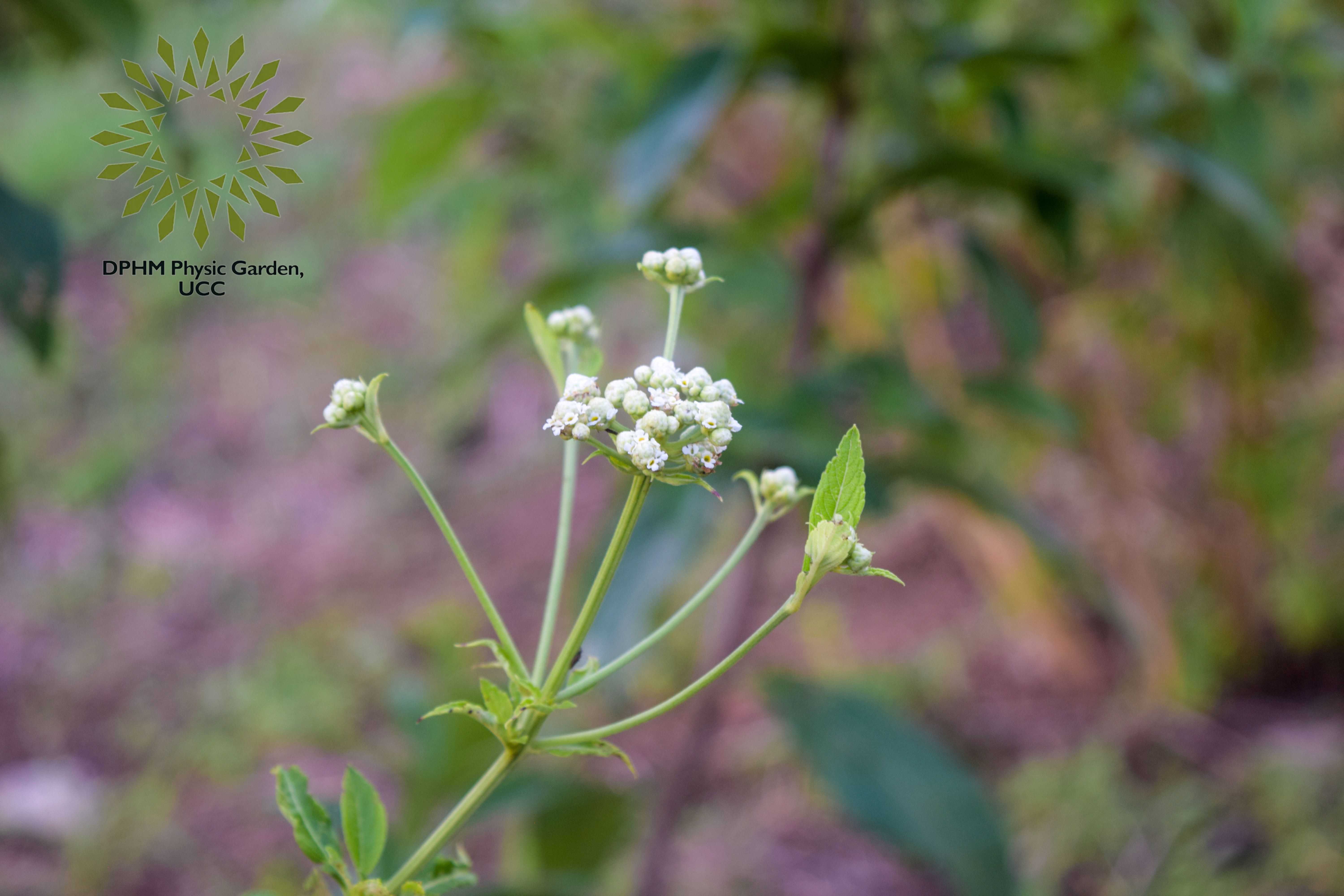LIPPIA MULTIFLORA
TAXONOMY
Family; verbenaceae Genus; lippia l.
Species; lippia multiflora moldenke
BOTANICAL DESCRIPTION
Lippia adoensis Hochst, sometimes called Lippia multiflora Moldenke. This plant, which is herbaceous, spreads across roadsides and shrublands in forested savannahs. The plant is common throughout South and Central America as well as West and Sub-Saharan Africa. The species is a perennial, woody, fragrant, hardy shrub that grows up to 4.0 meters in height. It features huge, rectangular, lanceolate, bluish-green leaves as well as whitish flowers in a terminal panicle arranged on conical heads.
COMMON NAMES
Bush tea, Gambian tea bush and Healer herb.
SYNONYMS
Lippia adoensis Hochst.; Lippia grandifolia Hochst. ex Walp
LOCAL NAMES
Srenunum (TWI)
Naasuruu (Ga)
Afudoti, Afu (Ewe)
ETHNOBOTANICAL USES
The leaves of L. multiflora, sometimes known as bush tea, are traditionally used as a laxative and a hot beverage with an infusion resembling tea for fevers, gastrointestinal disorders, enteritis, coughs, and colds . The whole plant's decoction is used to treat cough, toothache, anemia, general weakness, hiver affection (jaundice, liver insufficiency, gall bladder inflammations), loss of appetite, anemia, cardiac, weakness, dizziness, palpitations, weakness of nerves, melancholy, physical and mental overwork, malaria's pernicious access, shivers flu, asthma, low blood pressure, menopause anxiety, Severe jaundice, candidoses in the digestive tract, persistent ulcers, reflux, cold, and epilepsy.
PHYTOCHEMICAL PROPERTIES
An essential oil found in Lippia multiflora's aerial portions has been demonstrated to have antibacterial properties. Flavonoids and saponin glycosides are also present in the plant's leaves. Peptides, Carvacrol, and caffeine have also been shown to be present in the leaves. The plant's traditional applications for treating microbially-induced diseases were confirmed by the high level of antibacterial activity shown by the extracted carvacrol. The volatile ingredients found in the essential oil (lippia oil) derived from aromatic leaves and blossoms include linalool, geraniol, terpineol, camphor, nerolidol, α- and β-pinene, limonene, and thymol. The primary constituents of the Lippia multiflora are terpenoids and phenylpropanoids, with lesser amounts of polyketides, flavonoids, and alkaloids. The plant's leafy stems are rich in reducing chemicals, leuco-anthocyanes, anthocyanins, terpenes, and Gallic tannins, according to the results of the phytochemical screening. Identified substances includes; α-thujene; α-pinene; Camphene; Sabinene; β-pinene; Myrcene; α-phellandrene; α-terpinene; P-cymene; Limonene; Eucalyptol (E)-β-ocimene γ-Terpinene; Terpinolene, Camphor Terpinen-4-ol, α-terpineol Caryophyllene oxide Thymol Carvacrol, Thymyle, Acetate Β-caryophyllene, Germacrene-D Elemol, , Monoterpene hydrocarbon, Sesquiterpene hydrocarbon, Oxygenated terpenes.
CHEMICAL STRUCTURE
PHARMACOLOGICAL ACTIVITY
ANTIMICROBIAL ACTIVITY
Lippia multiflora and Lippia chevalieri essential oils demonstrated strong antibacterial action, particularly against Gram-negative bacteria, due to bioactive substances like p-cymene and thymol. L. multiflora essential oil demonstrated the highest efficacy, suggesting potential use as a natural antimicrobial agent. Carvacrol, a phenolic monoterpene, is believed to be responsible for its strong antibacterial action against various pathogens. Lippia multiflora essential oil exhibits strong antifungal activity against Aspergillus flavus, Aspergillus Niger, and Fusarium sp., with bioactive phytochemicals damaging cell membranes, inhibiting enzymes, and interfering with fungal metabolism, suggesting potential application in post-harvest grain stock management.
ANTIMALARIAL ACTIVITY
Lippia multiflora leaf extract demonstrated strong anti-plasmodial activity against Plasmodium berghei in mice. Lippia multiflora essential oil showed strong antimalarial activity against Plasmodium falciparum strains, both resistant and susceptible to chloroquine. It suppressed the parasite's trophozoite-schizont stage.
ANALGESIC ACTIVITY
Lippia multiflora leaf extract in rats showed a dose-dependent analgesic effect, possibly through pain pathway control or prostaglandin reduction. Lippia multiflora essential oil exhibits a significant and dose-dependent analgesic effect in mice during the acetic acid-induced writhing test, likely due to its bioactive phytochemicals that inhibit inflammatory mediators and alter opioid receptors, with the highest dosage also demonstrating antipyretic efficacy.
ANTI-INFLAMMATORY AND ANTIOXIDANT ACTIVITY
Rats treated with Lippia multiflora leaf extract showed dose-dependent anti-inflammatory effects, likely due to phytochemicals suppressing inflammatory mediators and signaling pathways, supporting its long-standing use in managing inflammatory diseases. The analgesic, antipyretic, and anti-inflammatory properties of Lippia multiflora Moldenke's (Verbenaceae) essential oil, which was obtained using traditional hydro distillation, were examined and investigated in rats and mice. Lippia multiflora leaves exhibit high antioxidant activity, peaking in season 3, due to its abundant phytochemicals like flavonoids and saponins, which effectively scavenge and reduce free radicals.
ANTIPYRETIC ACTIVITY
Lippia multiflora essential oil, at 8 ml/kg, showed strong antipyretic effects against brewer's yeast fever, likely due to bioactive phytochemicals altering inflammatory pathways.
ANTI-HYPERTENSIVE ACTIVITY
The aqueous leaf extract of Lippia multiflora showed strong antihypertensive effects in anesthetized cats and rats, reducing blood pressure through vasodilatory effects and skeletal muscle relaxation. The extract's bioactive phytochemicals, including terpenoids and flavonoids, may contribute to these cardiovascular effects.
ANTI-DIABETIC ACTIVITY
The extract of Lippia multiflora leaves, when combined with magnesium, showed significant antidiabetic effects in streptozotocin-induced diabetic rats. The extract, rich in bioactive phytochemicals, reduced blood glucose, cholesterol, and increased insulin levels. Magnesium may enhance these benefits due to its role in cardiovascular health and glucose regulation.
ANTISPERMATOGENIC ACTIVITY
Lippia multiflora leaf extract significantly reduced spermatogenic activity in male Wistar rats, leading to decreased sperm motility, increased morphological defects, and histological examination showing spermiostasis, epididymal aspermia, and germinal epithelial cell degeneration.
ANTIVIRAL ACTIVITY
Lippia multiflora essential oil (LMEO) showed antiviral efficacy against both type I enterovirus and type I poliovirus. After 48 and 72 hours of incubation, LMEO reduced type I enterovirus activity by 44.47 μg/mL. This was less effective than Zingiber officinale (ZOEO) essential oil, which inhibited the same virus at 9.860 μg/Ml.
CLINICAL VALIDATED USES
Not reported
DRUG-DRUG INTERACTION
Not reported
TOXIC PROFILE
Lippia multiflora's hydroethanolic and water extracts, with LC50 values of 3.56 ± 1.53 mg/ml and 1.14 ± 0.18 mg/ml, respectively, did not demonstrate any toxicity on prawn larvae. Furthermore, it was discovered that the extracts did not cause any harm to the human cell lines 9PS, KB, A-549, and HT-29. The absence of toxicity is most likely due to phytochemicals with potential protective or antioxidant qualities found in the plant's leafy stems, including as tannins, terpenes, steroids, and anthocyanins.
REFERENCE
Abena, A. A., Diatewa, M., Gakosso, G., Gbeassor, M., Hondi-Assah, Th., & Ouamba, J. M. (2003). Analgesic, antipyretic and anti-inflammatory effects of essential oil of Lippia multiflora. Fitoterapia, 74(3), 231–236. https://doi.org/10.1016/S0367-326X(03)00029-7
Allo, Y. F., Konan, B. A., Kpahe, Z. F., & Datte, Y. J. (n.d.). Magnesium Enhances the Antidiabetic Activity of Lippia multiflora Aqueous Extract on Glycemia, Lipid Profile and Cardiovascular Parameters in Streptozotocin-diabetic Rats.
Bassole, I. (2003). Chemical composition and antibacterial activities of the essential oils of Lippia chevalieri and Lippia multiflora from Burkina Faso. Phytochemistry, 62(2), 209–212. https://doi.org/10.1016/S0031-9422(02)00477-6
Danquah, Dr. C. (2015). Lippia multiflora Gambian tea bush / Bush tea. https://africanplants.ac.uk
Gandonou, D. C., Ahissou, H., Tokoudagba, J.-M., & Dansou, C. (2017). Ethnobotanical, phytochemical and toxicity analysis of a Beninese antihypertensive plant: Lippia multiflora. International Journal of Biological and Chemical Sciences, 11(4), 1816. https://doi.org/10.4314/ijbcs.v11i4.31
Goly, C., Soro, Y., Kassi, B., Dadié, A., Soro, S., & Dje, M. (2015). Antifungal activities of the essential oil extracted from the tea of savanna (Lippia multiflora) in Côte d’Ivoire. International Journal of Biological and Chemical Sciences, 9(1), 24. https://doi.org/10.4314/ijbcs.v9i1.3
https://kenochherbal.com/author/kenoch/. (2019). LIPPIA MULTIFLORA – Sareso nunum.
Jigam, A. A., Akanya, H. O., Ogbadoyi, E. O., Dauda, B. E. N., & Evans, C. (2009). In vivo antiplasmodial, analgesic and anti-inflammatory activities of the leaf extract of Lippia multiflora mold.
José-Rita, B. J., Bertin, G. K., Ibrahime, S. K., Yannick, K., Erick-Kévin, B. G., Riphin, K. L., Ceylan, R., David, N. J., Zengin, G., & Mireille, D. (2022). Study of the chemical and in vitro cytotoxic activities of essential oils (EOs) of two plants from the Ivorian flora (Lippia multiflora and Zingiber officinale) and their antiviral activities against non-enveloped viruses. South African Journal of Botany, 151, 387–393. https://doi.org/10.1016/j.sajb.2022.03.053
Kunle, O., Okogun, J., Egamana, E., Emojevwe, E., & Shok, M. (2003). Antimicrobial activity of various extracts and carvacrol from Lippia multiflora leaf extract. Phytomedicine, 10(1), 59–61. https://doi.org/10.1078/094471103321648674
Maxwell, M. S., Prince, K. B., Peter, A.-A., Peter, B., Ebenezer, E., Christiana, O., Henry, B.-D., & Alfred, A. A. (2024). Effect of seasonal variations on the secondary metabolites and antioxidant activities of Bridelia ferruginea, Lippia multiflora, and Azadirachta indica leaves. Journal of Pharmacognosy and Phytotherapy, 16(1), 1–13. https://doi.org/10.5897/JPP2023.0624
Noamesi, B., Adebayo, G., & Bamgbose, S. (1985). The Vascular Actions of Aqueous Extract of Lippia multiflora. Planta Medica, 51(03), 256–258. https://doi.org/10.1055/s-2007-969472
Oladimeji, F., Akinkunmi, E., Raheem, A., Abiodun, G., & Bankole, V. (2015). Evaluation of topical antimicrobial ointment formulations of essential oil of Lippia multiflora moldenke. African Journal of Traditional, Complementary and Alternative Medicines, 12(5), 135. https://doi.org/10.4314/ajtcam.v12i5.18
Oladimeji, F., Orafidiya, L., & Okeke, I. (2004). Physical properties and antimicrobial activities of leaf essential oil of Moldenke. International Journal of Aromatherapy, 14(4), 162–168. https://doi.org/10.1016/j.ijat.2004.09.011
Olukunle, J. O., Ajibola, E. S., Biobaku, K. T., Okediran, B. S., & Akinkuotu, O. A. (2021). Effects of Lippia multiflora leaf extract on the semen of Wistar rat. Nigerian Journal of Animal Production, 39(2), 172–178. https://doi.org/10.51791/njap.v39i2.828
Samba, N., Aitfella-Lahlou, R., Nelo, M., Silva, L., Coca., R., Rocha, P., & López Rodilla, J. M. (2020). Chemical Composition and Antibacterial Activity of Lippia multiflora Moldenke Essential Oil from Different Regions of Angola. Molecules, 26(1), 155. https://doi.org/10.3390/molecules26010155
Siqueira-Lima, P. S., Passos, F. R. S., Lucchese, A. M., Menezes, I. R. A., Coutinho, H. D. M., Lima, A. A. N., Zengin, G., Quintans, J. S. S., & Quintans-Júnior, L. J. (2019). Central nervous system and analgesic profiles of Lippia genus. Revista Brasileira de Farmacognosia, 29(1), 125–135. https://doi.org/10.1016/j.bjp.2018.11.006
Valentin, A., Pélissier, Y., Benoit, F., Marion, C., Kone, D., Mallie, M., Bastide, J.-M., & Bessière, J.-M. (1995). Composition and antimalarial activity in vitro of volatile components of lippia multiflora. Phytochemistry, 40(5), 1439–1442. https://doi.org/10.1016/0031-9422(95)00522-9
INFORMATION, DATA AND PICTURES ARE COPYRIGHT OF DPHM, SCHOOL OF PHARMACY, UCC.
